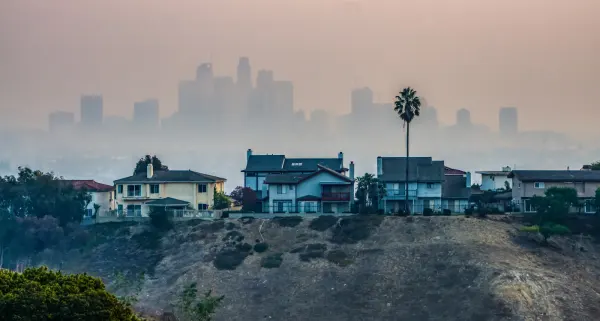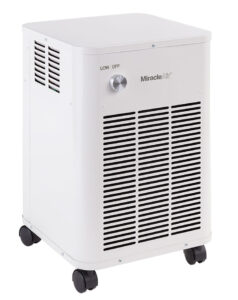How To Keep Indoor Air Safe During Wildfires
September 24th, 2024 | Posted in Air Cleaners
Health Effects
Wildfire smoke is more than just malodourous: it is a real health hazard. According to the US Environmental Protection Agency, “Wildfire smoke is a mixture of air pollutants of which particulate matter is the principal public health threat. Extensive scientific evidence has demonstrated health effects in response to short-term (i.e., daily) particulate matter exposure ranging from eye and respiratory tract irritation to more serious effects, including reduced lung function, pulmonary inflammation, bronchitis, exacerbation of asthma and other lung diseases, exacerbation of cardiovascular diseases, such as heart failure, and even premature death[i].” Older people and those with cardiovascular and respiratory diseases are at increased risk of adverse health effects from wildfire smoke exposure.
While particles from wildfire smoke can vary in size, approximately 90% of total particle mass emitted from wildfires consists of fine particles (i.e., PM2.5, particles 2.5 µm in diameter or smaller)[ii]
USEPA Recommends MERV 13 or Higher
The USEPA notes that people are commonly advised to stay indoors during a “smoke episode” as a means of controlling smoke exposures and they recommend appropriately sized room air cleaners to reduce particulate concentrations in individual rooms. The USEPA also states that: “It is important to chose a room air cleaner that produced little or no ozone.” This is because ozone creates its own set of air quality and respiratory system irritation issues. Media type air cleaners are the surest bet when comes to removing PM 2.5 without risk of introducing ozone into the atmosphere. The USEPA recommends filters rated MERV 13 or higher. MERV stands for “minimum efficiency reporting value” and that rating is determined by the American Society of Heating, Refrigeration, and Air-Conditioning Engineers (ASHRAE).
Stauffer et al (2020) have recently published a study quantifying the effectiveness of a media type portable air cleaner. These workers determined that when the ambient airshed was impacted by wildfire smoke, a media type portable air cleaner resulted in a percent change reduction in mean indoor PM2.5 concentrations of 73% during working hours and 92% during non-working hours, in an office setting[iii]. The difference between the results during working hours compared to non-working hours was due to the ordinary opening and closing of the doors to the office as people came and went during the day, thereby allowing smoky external air to enter the office. Whereas during non-working house, the doors remained closed and smoky air was not being re-introduced to the office space with every cycle of door opening/closing.
PM400 Exceeds USEPA Recommendation
Air Quality Engineering Inc. offers a portable media type air cleaner that exceeds the USEPA recommendation. The model PM400 MiracleAir includes a HEPA, or MERV 17, media filter that can be expected to equal or exceed the air cleaning performance of the unit tested by Stauffer et al. The PM400 meets California ozone emissions limits and is CARB certified. Send Air Quality Engineering, Inc. a note or call us at (888) 883-3273 for more application information.
[i] “Wildfire Smoke: A Guide for Public Health Officials: EPA-452/R-212-901, 2021. https://www.airnow.gov/sites/default/files/2021-09/wildfire-smoke-guide_0.pdf
[ii] Vicente A, Alves C, et al. Emission factors and detailed chemical composition of smoke particles from the 2010 wildfire season. Atmospheric Environment 2013; 71:295-303.
[iii] Stauffer, D. A. et all “Control of wildfire-sourced PM2.5 in an office setting using a commercially available portable air cleaner.” Journal Of Occupational And Environmental Hygiene 2020, VOL. 17, NO. 4, 109–120

